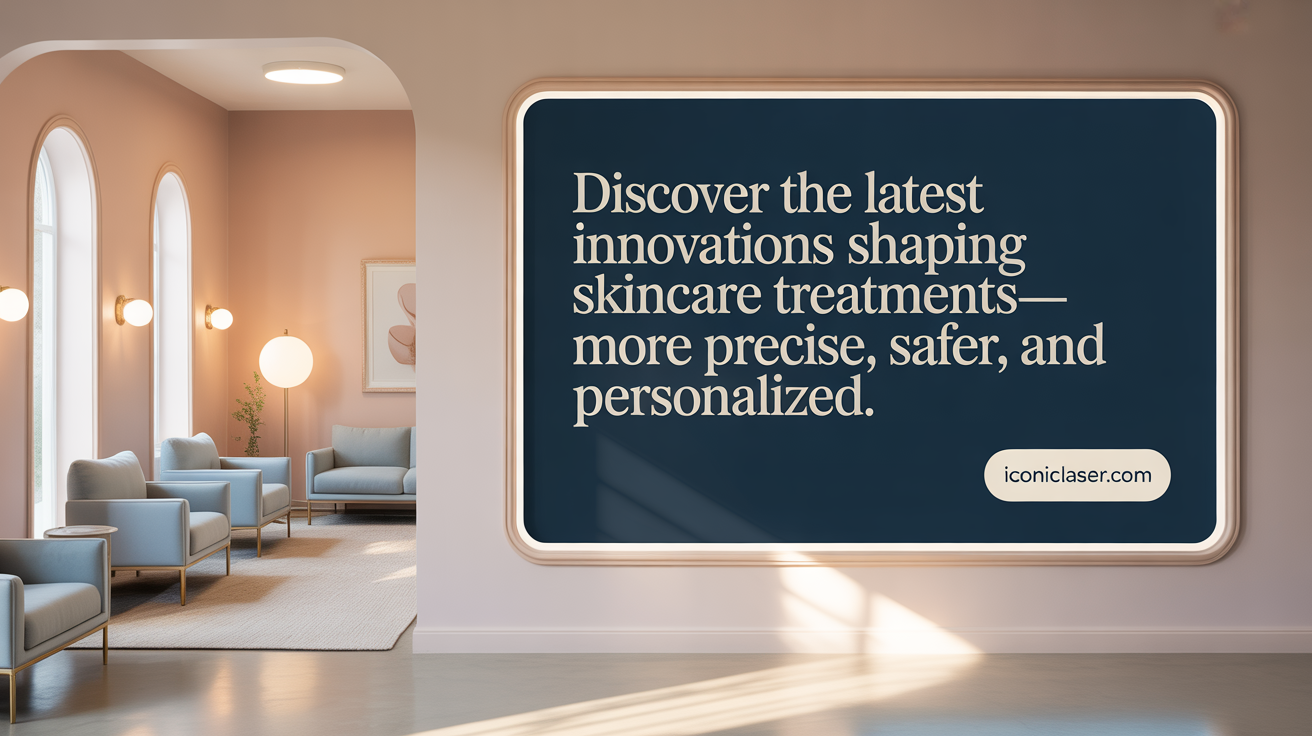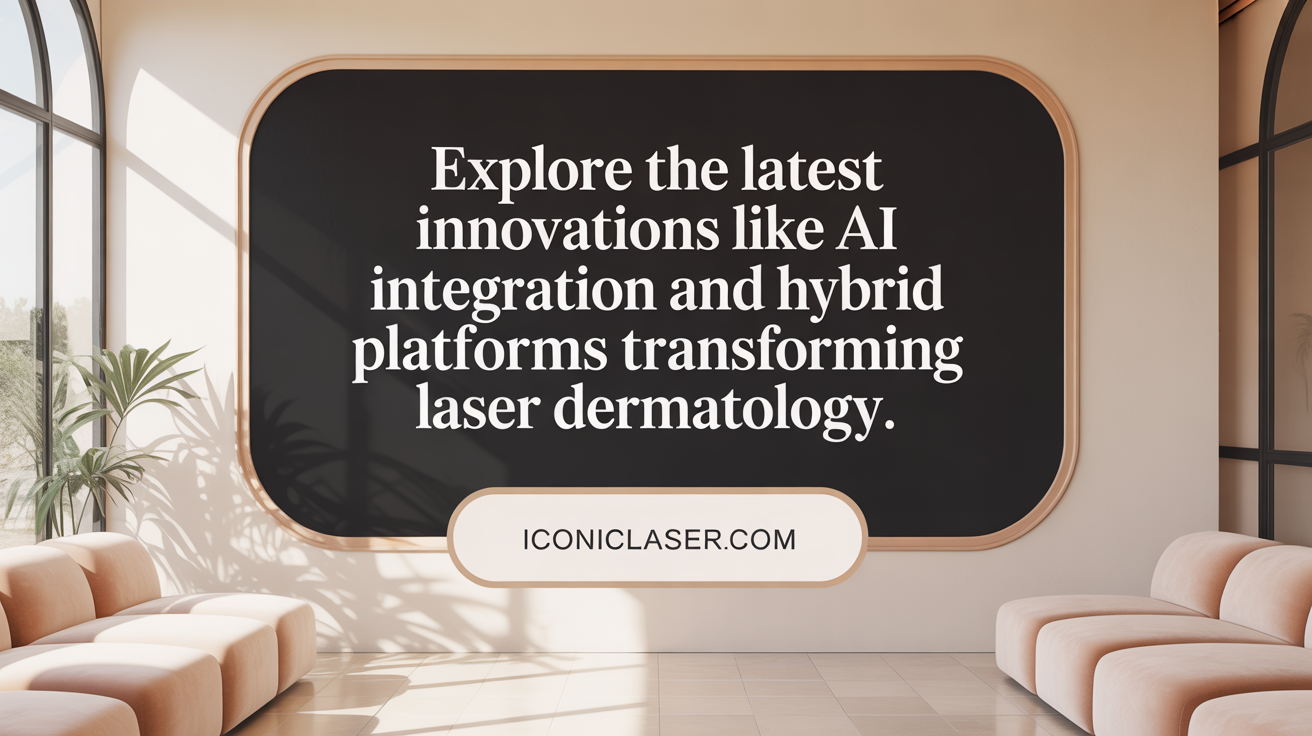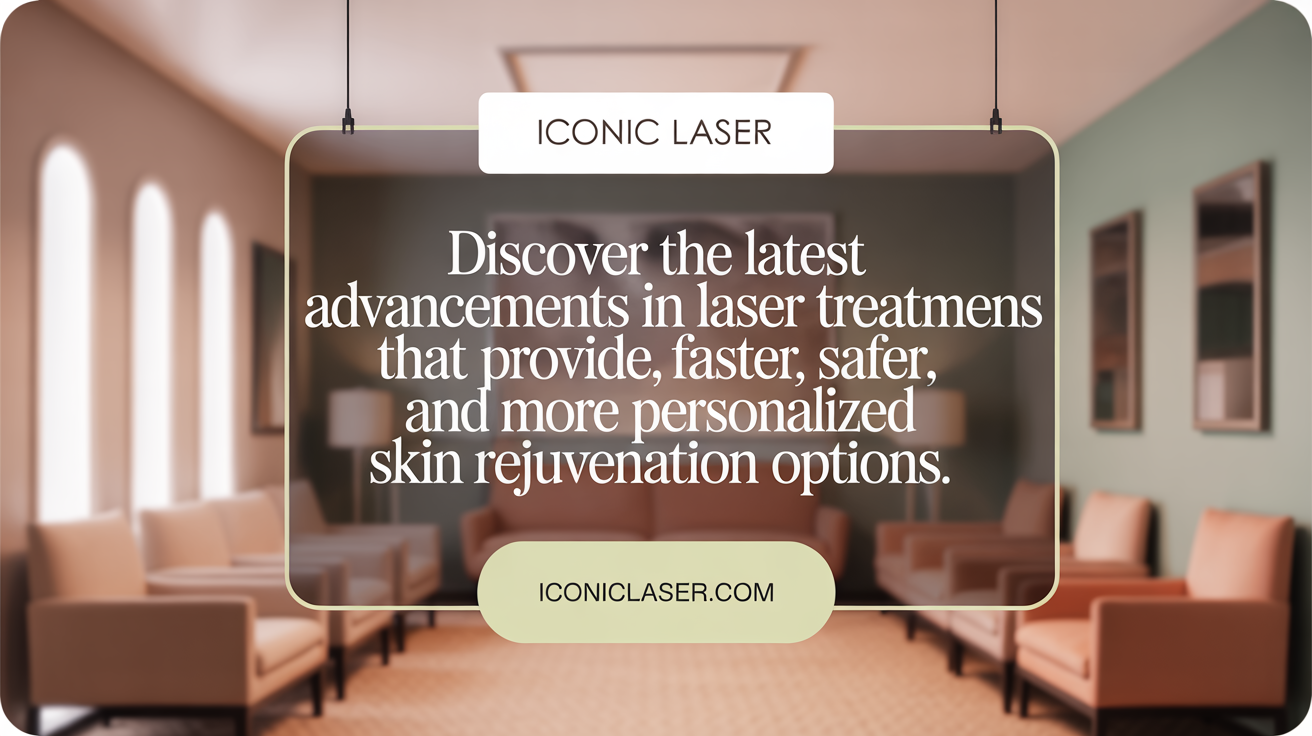Unveiling the Future of Laser Skin Treatments
Laser skin technology has surged forward in recent years, transforming cosmetic dermatology with innovative approaches that enhance precision, safety, and patient experience. From AI-powered personalization to hybrid laser systems, the latest developments are making treatments faster, less invasive, and accessible for a broader range of skin types. This article explores the key trends, breakthroughs, and emerging prospects shaping the future landscape of laser skin care in 2024 and beyond.
Breakthroughs in Laser Technology and Treatment Devices

What are the current advancements and innovations in laser skin technology?
Recent breakthroughs in laser skin technology have transformed the landscape of aesthetic treatments, offering safer, more effective, and personalized solutions. Innovations such as fractional and hybrid fractional lasers now enable precise targeting of skin imperfections with minimal downtime. These lasers create controlled micro-injuries that stimulate collagen production while preserving surrounding tissue, promoting rapid healing and impressive results.
The evolution of picosecond lasers and Nd:YAG systems allows clinicians to treat a broader spectrum of skin tones safely, including darker complexions where older laser technologies posed risks of hyperpigmentation. Picosecond lasers excel in skin tightening and pigmentation correction by delivering ultra-short pulses that break down pigmentation and stimulate collagen vividly.
Artificial Intelligence (AI) integration further enhances laser devices by providing real-time skin analysis and automatic adjustment of treatment parameters. This leads to clinical precision, reduced discomfort, and optimized healing processes. Moreover, advances in cooling systems improve patient comfort during procedures, leading to virtually pain-free experiences.
Vascular and multispectral laser technologies, including innovations in vascular lesion treatment and broad-spectrum light sources, now target conditions like rosacea, spider veins, and vascular scars efficiently. These systems can switch wavelengths quickly, enabling comprehensive skin rejuvenation in a single session.
Overall, technological advances in laser devices are expanding treatment possibilities, delivering longer-lasting results and reducing side effects. This surge in innovation ensures that laser skin treatments remain at the forefront of non-invasive skin rejuvenation, accommodating diverse skin types and conditions while prioritizing safety and patient satisfaction.
Emerging Trends Driving the Future of Laser Dermatology

What emerging trends and future prospects are shaping the field of laser dermatology?
The landscape of laser dermatology in 2024 is rapidly evolving, driven by cutting-edge innovations and a growing emphasis on personalized care. One of the most prominent developments is the use of AI-powered devices that analyze skin type and conditions in real-time. These systems adjust treatment settings for maximized safety and efficacy, reducing discomfort and minimizing healing time.
Laser stacking techniques, which combine different modalities within a single session, are becoming increasingly popular. This approach enables dermatologists to tackle multiple skin concerns—like scars, pigmentation, and wrinkles—more efficiently, often leading to faster results and less overall downtime.
Additionally, non-invasive laser options continue to expand, providing effective treatment with minimal recovery. Technologies like fractional lasers and ultra-clear ablative systems are notable for their ability to stimulate collagen and improve skin texture without significant irritation or redness.
Nanotechnology and regenerative medicine are also making a significant impact. Nano-enhanced skincare ingredients improve the delivery of active compounds, while bioengineering techniques such as stem cell therapies and gene editing are poised to redefine skin rejuvenation and repair practices.
Sustainable practices in laser clinics are gaining traction. Clinics now prioritize energy-efficient, recyclable equipment and chemical-free cooling systems, aligning aesthetic treatments with environmental responsibility.
Lastly, the integration of multifunctional, hybrid treatment platforms that combine laser therapy with microneedling, RF, and ultrasound technologies will make treatments more versatile and patient-friendly. As these trends converge, laser dermatology is set to become increasingly personalized, minimally invasive, and sustainable—offering safer, more effective options for diverse skin types and conditions.
Innovations in Laser Skin Treatment Techniques

What are the recent developments in laser skin treatment techniques?
The year 2024 has seen remarkable progress in laser skin treatments, making procedures safer, more effective, and tailored to individual needs. Fractional CO2 and Er:YAG lasers are now highly refined, delivering precise skin resurfacing with shorter recovery periods. These lasers target fine lines, wrinkles, and scars more accurately and with fewer side effects, thanks to improved safety features.
Nonablative lasers like Fraxel continue to evolve, providing effective treatments for pigmentation issues and skin texture with minimal downtime. Their gentle approach makes them popular among patients seeking subtle rejuvenation. Hybrid fractional lasers, such as Halo®, combine ablative and non-ablative wavelengths to maximize outcomes for sun damage, uneven tone, and texture irregularities in fewer sessions.
One of the most exciting advancements involves Pico lasers, which emit picosecond pulses. These ultra-fast pulses allow for better skin tightening, scar reduction, and pigment removal, all while minimizing discomfort and risk. Furthermore, technology improvements have enabled personalized laser settings, where adjustable parameters are tailored in real-time based on skin type and condition.
Treatments are increasingly combining laser modalities with other therapies, such as platelet-rich plasma (PRP) and microneedling, to enhance collagen production and skin renewal. Laser stacking—applying multiple laser types in succession or simultaneously within a single session—further optimizes results. These multiplex treatments target different skin concerns at once, reducing overall treatment time and recovery period.
Continuing device innovations and integration of AI technology allow for more precise control and customization, expanding the possibilities of laser skin rejuvenation. As a result, patients benefit from less invasive procedures with faster healing, making advanced laser therapy more accessible and effective in 2024.
Market Dynamics and Industry Directions in Laser Skincare

What are the latest market insights and industry directions in laser skincare?
The laser skincare sector is booming, with experts projecting it to surpass USD 6 billion by 2032. This rapid expansion is driven by a growing global appetite for non-invasive aesthetic treatments, technological leaps, and rising disposable incomes that make such procedures more accessible.
North America continues to lead the market, thanks to high consumer awareness, strong industry presence, and major players like Cynosure and Candela. Meanwhile, the Asia-Pacific region is showing remarkable growth, propelled by urbanization and a surge in medical tourism, bringing advanced laser therapies closer to larger populations.
Innovation plays a pivotal role in shaping this industry. Cutting-edge laser systems—such as fractional, solid-state, and wavelength-specific lasers—are enhancing safety and treatment outcomes. These developments have broadened eligibility, making treatments suitable for a wider range of skin types, including darker tones.
A notable trend is the shift towards smarter, more personalized treatment protocols. Integration of artificial intelligence (AI) and advanced imaging allows clinicians to tailor therapies precisely, improving efficacy while reducing discomfort and downtime.
Consumers are increasingly favoring minimally invasive options, often opting for combination therapies that blend laser technology with other modalities like radiofrequency or microneedling. Laser skin resurfacing remains a fast-growing segment, especially fractional laser treatments that offer significant results with minimal recovery.
Overall, advancements in laser technology, changing consumer preferences, and expanding regional markets are collectively redefining the future of laser skincare. The industry’s focus is now on safety, customization, and sustainability, aligning with the broader trend toward holistic and inclusive cosmetic solutions.
Safety, Efficacy, and Clinical Research Advancements

What are the current research updates regarding the safety and efficacy of laser treatments?
Recent advancements in laser technology have solidified their role as safe and effective options for skin rejuvenation and repair. Multiple studies highlight that combination laser therapies, such as KTP with Nd:YAG or Er:YAG with Nd:YAG, outperform single modalities by providing higher improvement rates and fewer side effects. Patients undergoing these dual or multi-modal treatments report improved results, less discomfort, and quicker recovery times.
In particular, fractional and non-ablative lasers continue to improve safety profiles. These technologies reduce risks like pigmentation changes, inflammation, and scarring, which are more common in traditional ablative lasers, especially for darker skin tones. Clinical trials demonstrate that fractional lasers precisely target only parts of the skin surface, allowing for faster healing and minimal downtime while delivering substantial collagen stimulation.
Evidence from histological examinations confirms that modern laser treatments effectively stimulate collagen, elastin, and fibroblast activity, culminating in visible skin tightening and improved texture. These studies show that laser sessions promote natural skin healing processes, strengthening the skin's structure over time.
Ongoing research persists in refining treatment parameters, aiming to enhance results while ensuring patient safety across a diverse range of skin types. Although current findings are promising, further high-quality clinical trials are recommended to optimize protocols, particularly for ethnic skin and sensitive populations. Such efforts are guiding a future in which laser therapies are safer, more effective, and accessible for everyone.
For more detailed investigations and updates, searching terms like "laser treatment safety efficacy research 2024" can yield the latest scientific publications and clinical trial results.
Advances in Skin Resurfacing, Scar Treatments, and Cosmetic Procedures
Recent progress in laser technology has transformed how dermatologists treat skin concerns and scars, making procedures more effective and safer than ever before.
One of the most important developments is the widespread use of fractional laser systems. These lasers, including fractional ablative and non-ablative options, target small skin areas, stimulating collagen production and skin remodeling with minimal downtime. Ablative fractional lasers like fractional CO2 and Er:YAG are particularly effective for deep skin rejuvenation, reducing scars, wrinkles, and age spots.
Pulsed dye lasers are now routinely employed for scars, especially hypertrophic and keloid types. They work by improving blood flow and softening scar tissue, making scars less noticeable and more flexible. When used early after injury, fractional lasers combined with PRP (platelet-rich plasma) or microneedling further enhance healing.
Innovations like picosecond lasers are gaining popularity for skin tightening and resurfacing due to their ability to target multiple skin layers with minimal discomfort and downtime. These lasers deliver ultra-fast pulses that stimulate collagen and elastin, resulting in firmer, smoother skin.
Laser-assisted drug delivery is another exciting advancement. This technology uses laser energy to create microchannels in the skin, allowing topical medications to penetrate deeper. This method boosts the efficacy of skincare ingredients and medications for conditions like hyperpigmentation, scars, and skin laxity.
Combination treatments are increasingly common, blending lasers with other modalities such as microneedling, radiofrequency, or injectables. These integrated approaches provide comprehensive rejuvenation, addressing skin texture, tone, and volume in a single session.
In body contouring, non-invasive modalities like radiofrequency (RF) and ultrasound therapies are enhancing fat reduction and muscle toning, offering patients effective alternatives to surgical procedures.
All these innovations reflect a move toward more personalized, minimally invasive treatments, delivering quicker recovery, superior results, and higher patient satisfaction in 2024 and beyond.
| Laser Type | Application | Benefit | Typical Downtime |
|---|---|---|---|
| Fractional Ablative | Skin resurfacing, scars | Deep skin remodeling, reduced scars | Days to a week |
| Fractional Non-Ablative | Skin rejuvenation | Collagen boost, minimal downtime | 1-3 days |
| Pulsed Dye Laser | Vascular scars, redness | Scar softening, color correction | Same day / few days |
| Picosecond Laser | Skin tightening, resurfacing | Collagen stimulation, minimal discomfort | Few days |
| Laser-Assisted Drug Delivery | Hyperpigmentation, scars | Enhanced medication absorption | Same day |
| Combined Modality (e.g., Laser + Microneedling) | Multiple concerns | Synergistic effects, improved outcomes | Few days |
These advancements underscore a bright future for skin rejuvenation and scar treatment, where personalized, effective, and safe options are accessible to a broad range of patients.
The Transformative Horizon of Laser Skin Technology
The latest trends in laser skin technology underscore a dynamic evolution driven by scientific breakthroughs, AI integration, and patient-centric innovations. With continual improvements in device versatility, safety, and treatment personalization, lasers are redefining non-invasive skin care and cosmetic procedures. The convergence of advanced imaging, regenerative medicine, and eco-conscious practices further enriches this transformative field, promising more accessible, effective, and inclusive solutions. As research deepens and technology matures, laser dermatology is poised to offer increasingly sophisticated, natural, and long-lasting skin rejuvenation options that meet the diverse needs of global patients into the future.
References
- The Future of Laser Aesthetics: Trends Transforming Skincare in 2024
- The Latest Trends in Laser and Energy-Based Dermatology
- The Rise of Beauty Tech: How Lasers Are Changing Skin Care ...
- 3 Facial Laser Treatments Trending This Spring 2025 - ELLE
- Innovations in Laser Skin Resurfacing in 2025 (Must Read) - Mychway
- The Future of Cosmetic Procedures: Advances in Laser Technology
- Advancements in laser technologies for skin rejuvenation: A ...
- Exploring the Latest Advances in Cosmetic Dermatology
